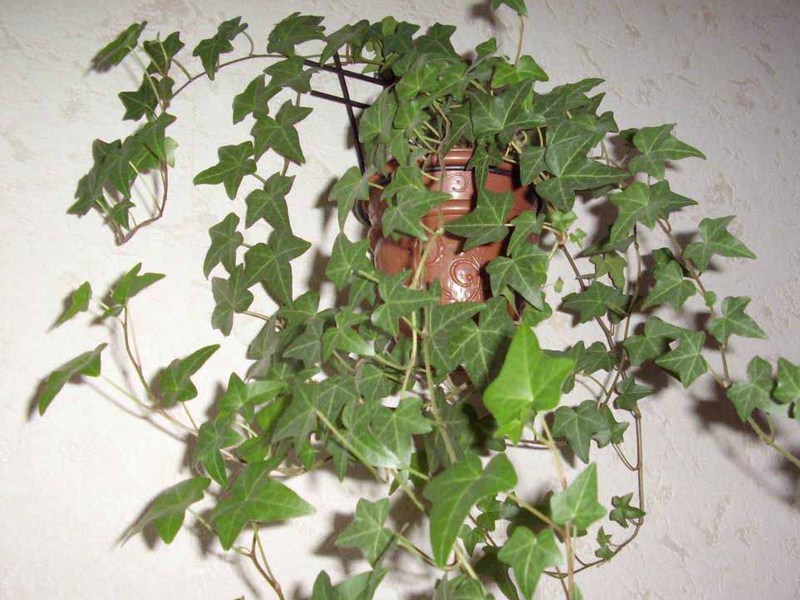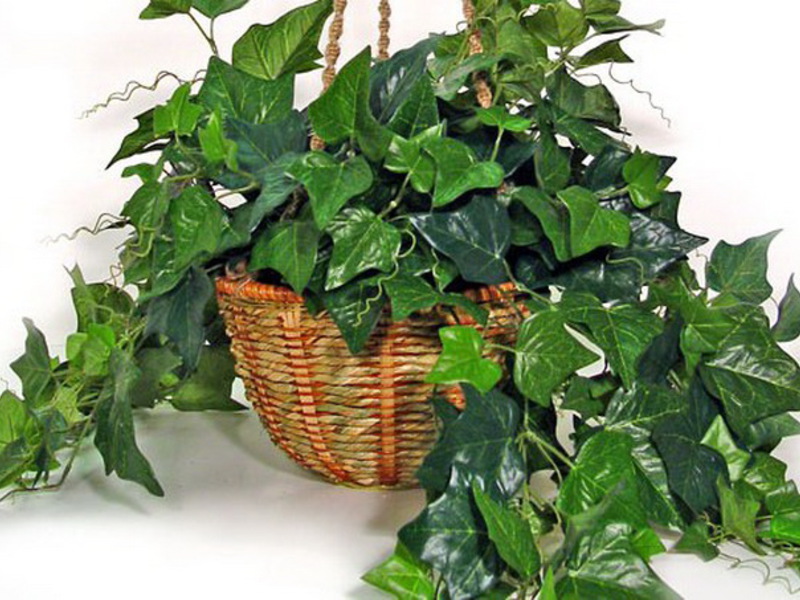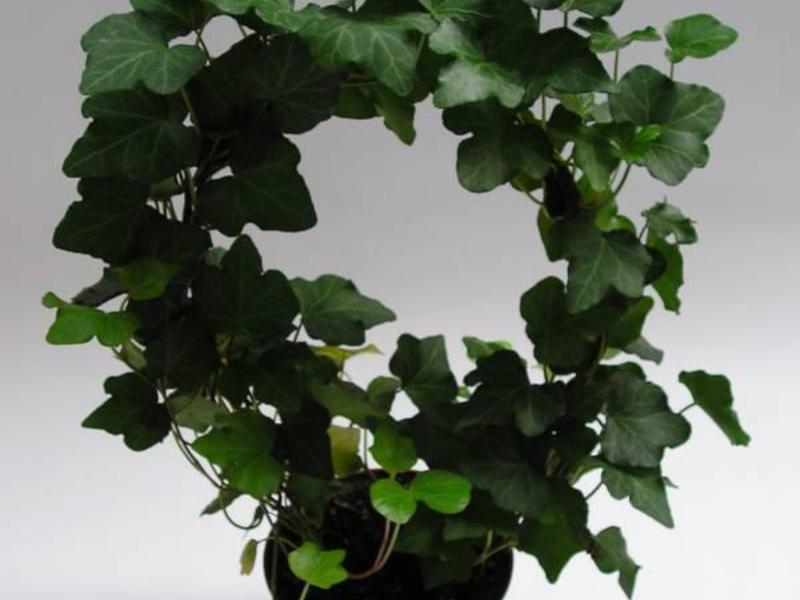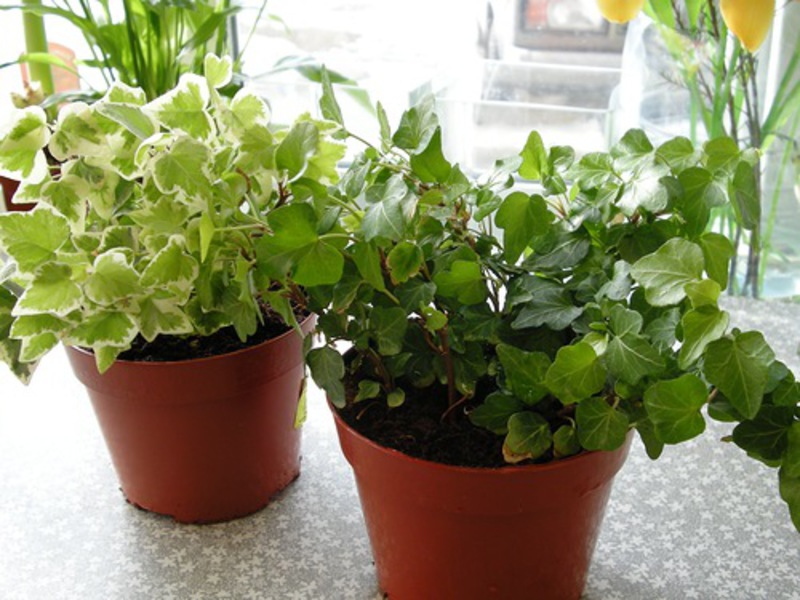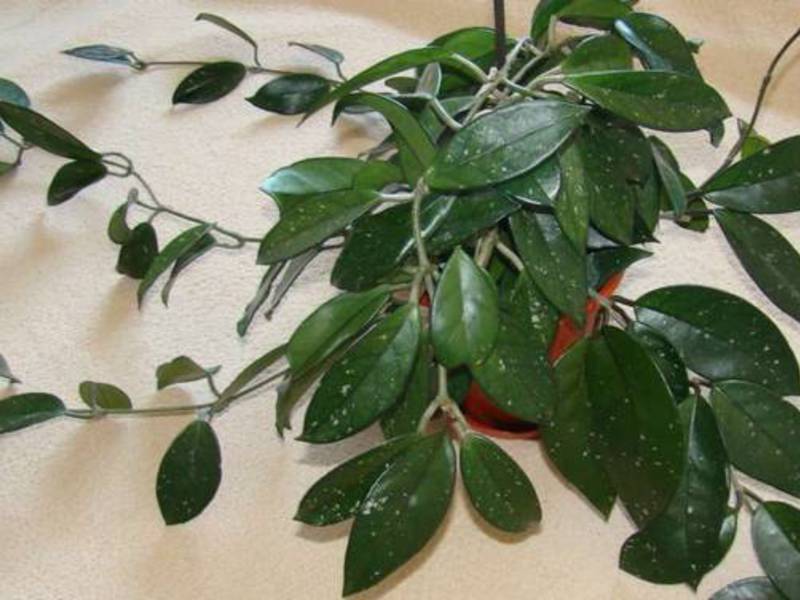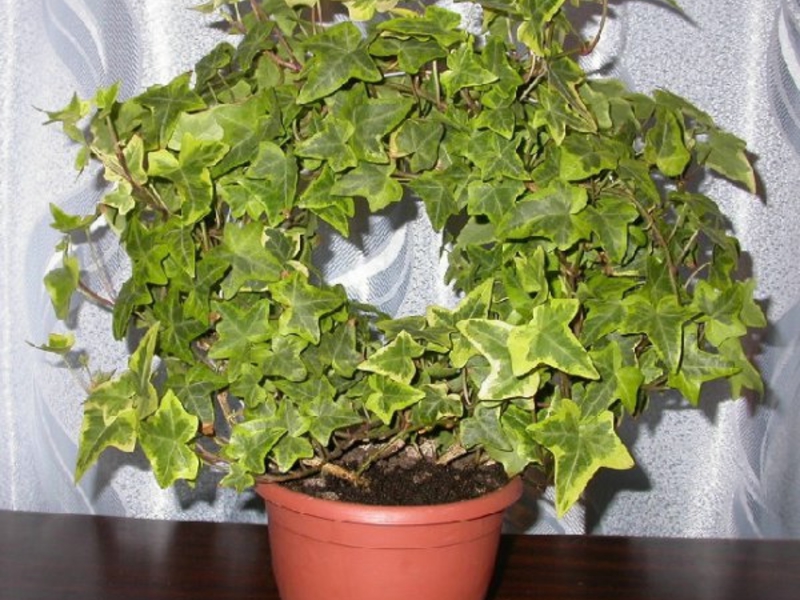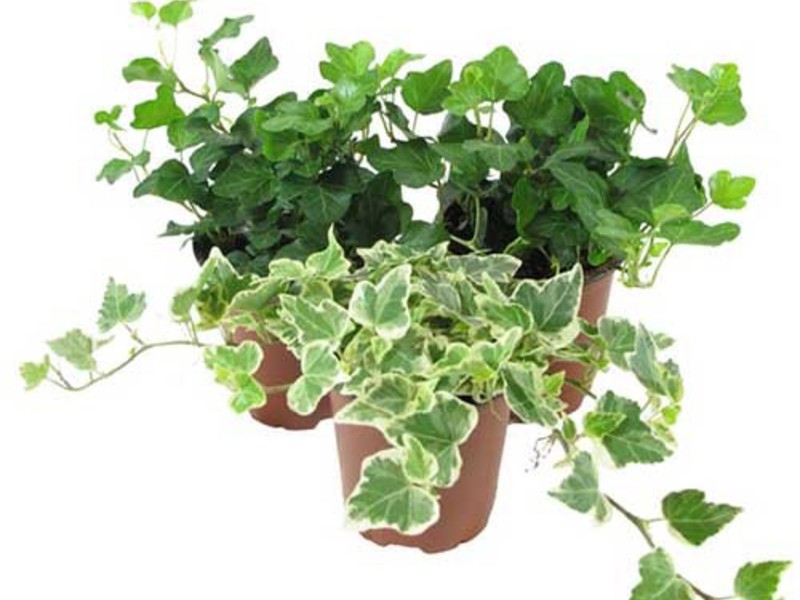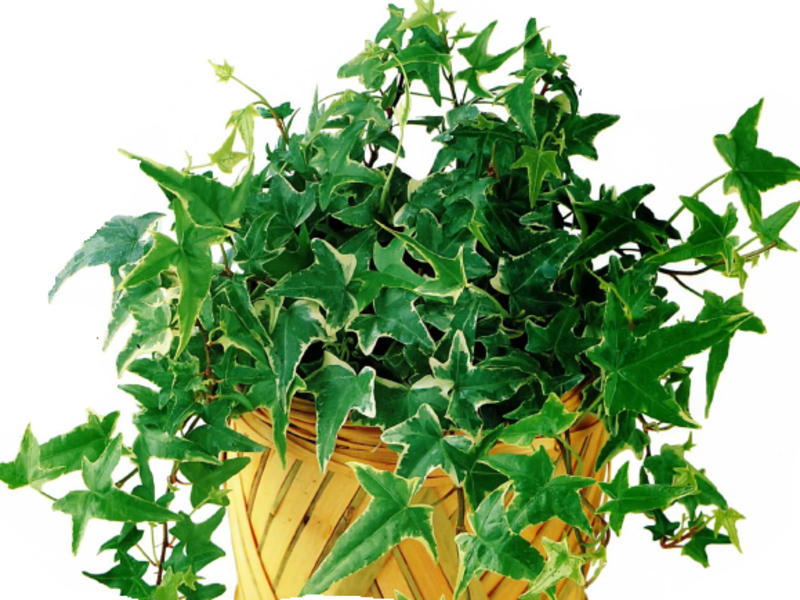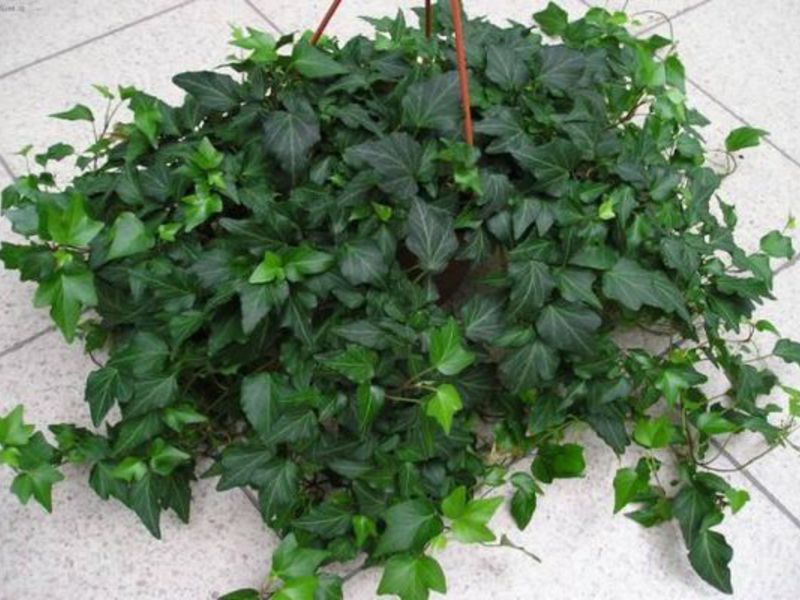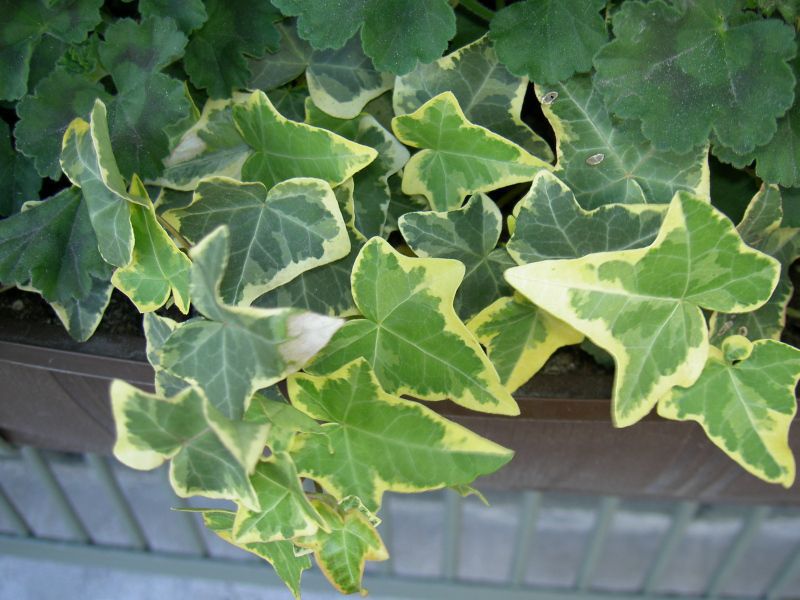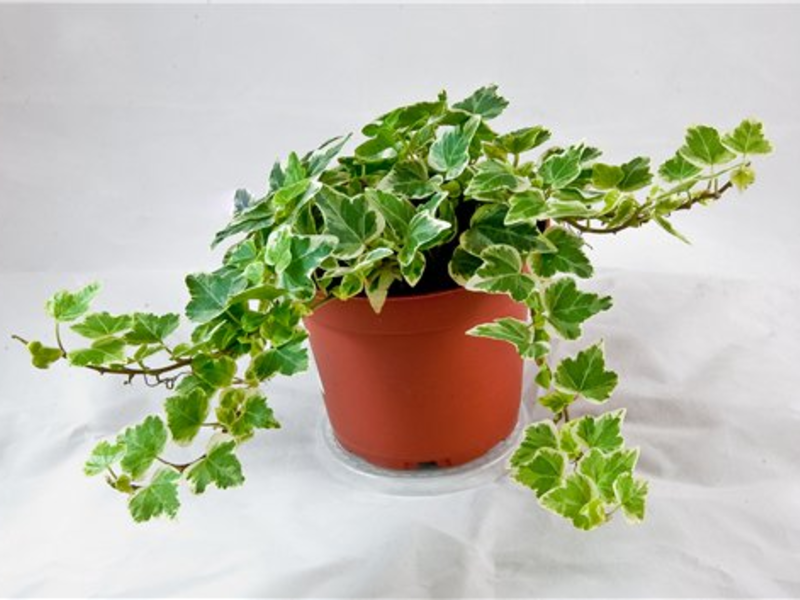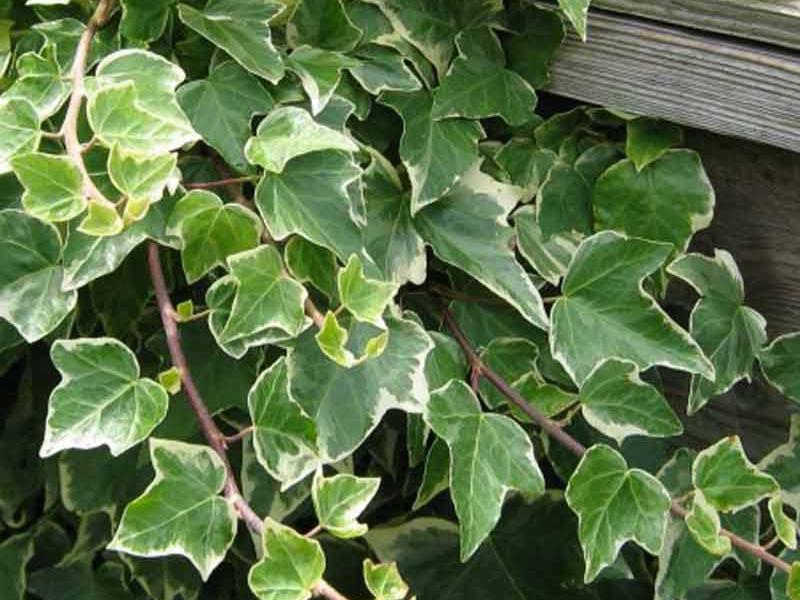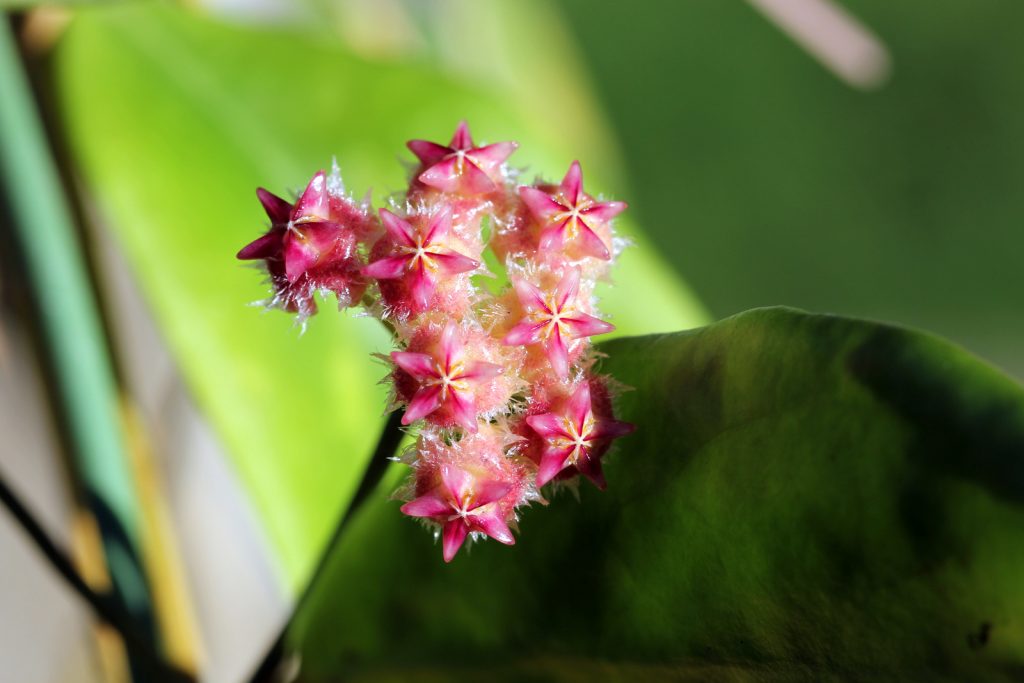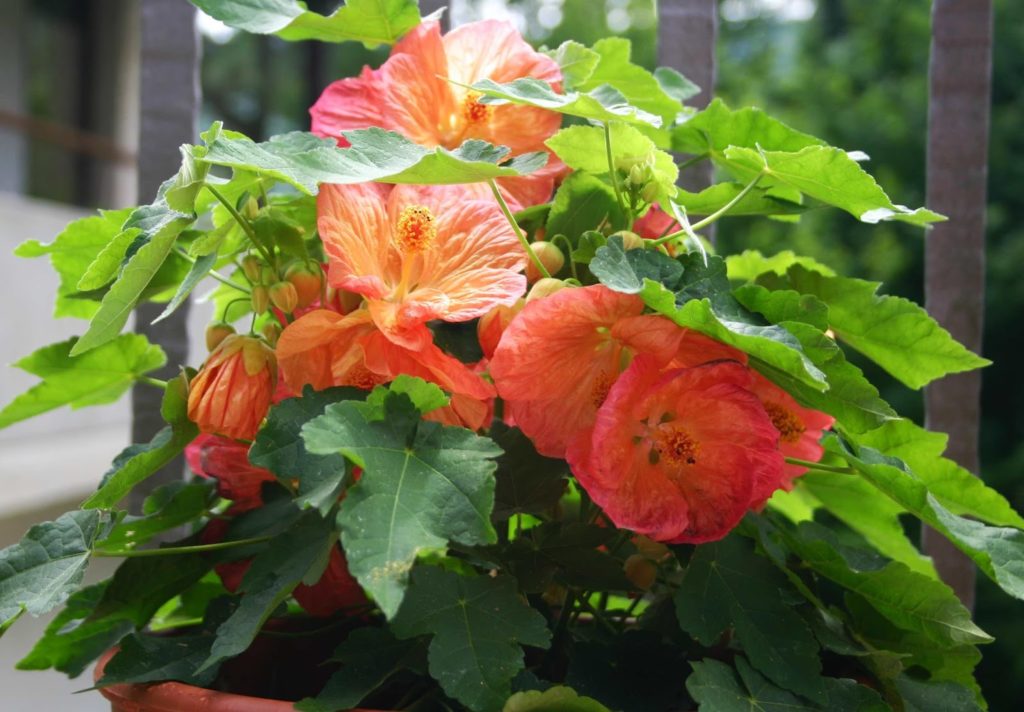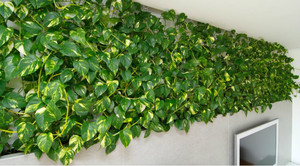Hedera (ivy) belongs to the Araliev family and is an evergreen climbing plant, which in natural conditions can reach thirty meters in height. Today, there are about fifteen varieties of ivy hedera, which grows in the subtropical zones of Africa, Asia, Europe, North and South America.
Ivy has long been one of the most popular and favorite shrubs among gardeners. This is not surprising, because the heder looks equally beautiful both in hanging pots and in outdoor flowerpots, has a decorative look and reproduces quite easily. Looks especially gorgeous english ivy.
Indoor ivy is most often grown, the species of which are distinguished by a variety of forms and colors of foliage.
Hedera: description and photo
Hedera vulgaris has a climbing stem, on the underside of which there are dense brushes of aerial roots. It is with their help that the plant is attached to the support. Lobed leaves (3 - 7 lobes), leathery, shiny, simple, alternate. Their color is mainly dark green with light veins, but variegated species are also found.
Common ivy blooms only in natural conditions. It has small flowers of greenish-yellow color, collected in racemose, corymbose or umbellate inflorescences.
The following types of ivy are commonly grown at home:
- ivy fatskhedera Lisa;
- canary ivy;
- curly ivy (ordinary).
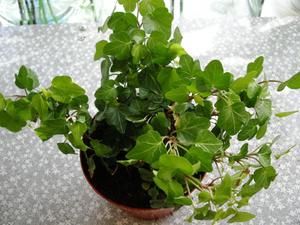 Fatskhedera ivy Lise is a very popular new hybrid, reaching a height of up to 5 meters and requiring tying. The Variegata variety with a beige border or white spots on the leaves looks very impressive.
Fatskhedera ivy Lise is a very popular new hybrid, reaching a height of up to 5 meters and requiring tying. The Variegata variety with a beige border or white spots on the leaves looks very impressive.
Canary ivy... This species has large leaves, in most cases of a variegated color, needs to be tied up, since it is unable to independently cling to a support. Gloire de Marengo is considered to be especially popular with its excellent combination of green and cream shades on the leaves.
Ivy... The plant has unusual plasticity and is capable of twisting around any support and clinging to even small irregularities.
Popular varieties of this species:
- Littl Diamond. The plant has cream-colored veins.
- Chicago Variegata. Bright green leaves, decorated with a yellow-cream border.
- Annette with dark green leaves.
- Chicago. It has small bright green leaves.
Ivy application
The healing properties of heder have long been known to mankind, due to which ivy is still widely used in folk medicine and cosmetology. The substances that are contained in the wood of the plant perfectly relieve spasms, so ivy is successful used to treat acute bronchitis... And hedera leaves have expectorant, antibacterial, anticancer and antifungal properties. Gels made from wood and ivy leaves are used as an additional treatment for cellulite, obesity and purulent dermatoses. However, care should be taken as the fruits of the plant are very poisonous and can cause poisoning.
Can heder be grown at home?
According to old people, indoor ivy is an energy vampire that can attract all sorts of troubles and misfortunes into the house, including loneliness, so if you value your family and do not want to lose your husband, this flower should not be kept in the apartment. However, according to historical documents in Ancient Rome and Greece, ivy, on the contrary, was considered a symbol of fidelity and happiness in marriage, and in the countries of the East, the plant is still a source of vital energy. Therefore, everyone chooses for himself: is it worth growing ivy at home or not.
Hedera: home care
Caring for the plant is quite simple and does not require much effort, however, some rules, non-observance of which can lead to a change in appearance and the occurrence of diseases still exist.
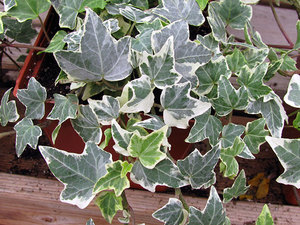 Lighting... Hedera, like other ivy species, needs good lighting, but does not tolerate direct sunlight. For green varieties, exposure to bright light is allowed, but only for a short time. It is also not recommended to constantly rearrange the container with the plant, so the header does not tolerate changes in position relative to the light source.
Lighting... Hedera, like other ivy species, needs good lighting, but does not tolerate direct sunlight. For green varieties, exposure to bright light is allowed, but only for a short time. It is also not recommended to constantly rearrange the container with the plant, so the header does not tolerate changes in position relative to the light source.- Temperature regime... The plant prefers a cool to moderate temperature, not exceeding 16 ° C. In winter, it is advisable to place ivy in a cool room where the temperature will not exceed 12 ° C. A violation of the temperature regime, as well as increased dryness of the air, can lead to damage to the shield.
- Air humidity... In the summer, the plant needs frequent spraying. Provided that the room is very dry and warm in winter, spraying should be continued. It is also recommended to have a warm shower from time to time.
- Top dressing... Complex fertilizers (it is better to use preparations for ornamental plants) should be applied from the beginning of spring to the end of summer with an interval of two weeks. For the same purpose, you can use mullein infusion. Important! In order to prevent the growth of leaves and the loss of decorative qualities of the hedera, it is necessary to fertilize the plant in the correct dosage and according to a clear scheme.
- Watering... Hedera or English ivy needs abundant watering. In the summer, it is necessary to constantly maintain the soil in the pot in a moist state, in the winter, watering should be moderate, the humidity should be reduced, but at the same time, the soil should not dry out.
Planting and transplanting heders
If you notice that the plant has stopped growing and developing, or roots have begun to creep out of the drain hole in the pot, then it is time to transplant. However, you can not expect these signs, but simply change the topsoil to fresh (in adult plants), young ivy replant every year, and older cheder - every two years. It is recommended to apply the following soil composition: sand, peat, turf, leaf and humus soil in equal proportions.
Plants must be transplanted in the spring at the end of the dormant period (March-April). The container should be 2-3 cm larger in diameter than the previous pot. Before starting the transplant, the cheder should be watered abundantly, and a layer of drainage should be laid on the bottom of the flowerpot. The transplanted plant must be watered and sprayed, and then placed in a permanent place.
Reproduction of heders
Ivy reproduces almost at any time of the year, and the cuttings quickly take root both in water and in the ground. After planting in a permanent place, the plant must be pinched, which will increase the decorative qualities of the heder. In the first year after planting, ivy should be pinched periodically to ensure good branching.
Hedera helix: diseases
 Caring for ivy at home, you should strictly monitor air humidity and follow the rules of watering. If it is too hot in the room, the leaves of the plant dry out, turn brown and eventually fall off. Also, a spider mite can cause the heder to dry out.
Caring for ivy at home, you should strictly monitor air humidity and follow the rules of watering. If it is too hot in the room, the leaves of the plant dry out, turn brown and eventually fall off. Also, a spider mite can cause the heder to dry out.
In addition, ivy can infect the cyclamen tick, scale insect and aphids. All these pests appear precisely because of the lack of humidity in the room. In this case, it is necessary to urgently take measures to destroy the pests, that is, treat them with insecticides (karbofos, aktara, actellik, etc.).
Precautions
At home, plant care should be carried out with rubber gloves. Do not plant a bush in places accessible to children and animals, as berries and ivy leaves are very poisonous and can cause allergic reactions and skin diseases in people with sensitive skin.
As can be seen from all that has been said, it is not so difficult to care for a room hedera helix, you just need to choose a suitable place for planting, do not forget about watering and periodically spray. And then you will get a gorgeous plant that will decorate and revitalize any room.
